Okra Companion Planting [The best and the worst plants to grow with okra]
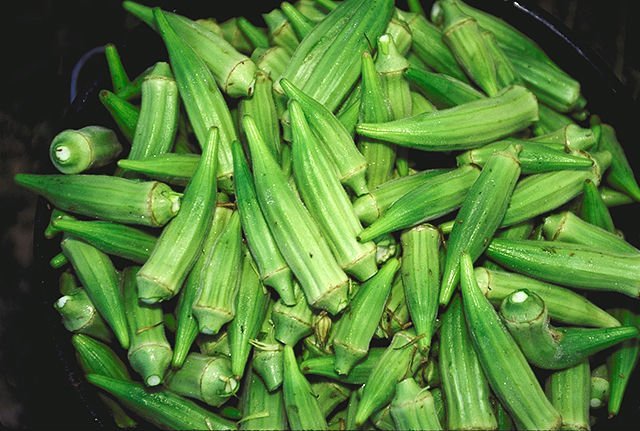
If you are an okra farmer and you are looking for companion crops for your okra plants, then this article is for you.
Okra companion planting is the practice of growing other crops on the same piece of land with your okra.
So, if you have never tried okra companion planting or you are experiencing difficulties in this practice, then you may want to read through until the end.
Growing other plants together with your okra comes with some benefits which you will see in this article.
But not all plants are good companion crops for okra.
While some plants may help to deter pests and diseases, others might be parasites to your okra plants or even attract pests and diseases.
In this article, you will learn about the different pest and diseases that affect okra and the best companion plants to help combat their attacks.
If you are ready, let’s get to work!
Why companion planting?
To know why companion planting is important in agriculture, we need to first understand what it is all about.
Companion planting is the practice of planting crops that are mutually beneficial to each other.
The purpose of this practice is to provide an enabling farming atmosphere for the maximum growth of plants.
Therefore, okra companion planting refers to a system of cultivating okra together with other crops in such a way that they all benefit from one another.
Here are some of the reasons for planting companion plants
- Planting different types of plants close to each other can boost the growth of the plants.
- It helps to repel pests on the farm.
- Some companion plants can even improve the flavor of your okra harvest.
- In addition to the benefits to your plants, companion planting allows you to use your garden space more efficiently. As a result, you can harvest more varieties of plants in a given space.
Later in this article, we’ll talk more about the why it is necessary to practice companion planting in your okra farm.
What you need to know about the okra plant.
Okra is a plant that comfortably grows in areas of warm/hot temperature.
This means it needs enough sunlight and well-drained soil to survive.
For this reason, it can tolerate the effects of the drought seasons.
Okra plants grow 6-7ft tall and and does well in loamy and sandy soil.
It is very important to note that okra plants will not develop well in a place of low temperature.
Nevertheless, you still need to ensure that water the plant well enough during hot seasons.

What are the pests that attack the okra plant?
1. Cabbage loopers:
The cabbage loopers are caterpillars that eat holes into the leaves, and possibly the stem of the plants as they develop.
2. Stink bug:
Having a pod that is irregular in shape is a sign that the stink bug has infected the okra plant.
This irregularity in shape will range from twisting to the distortion of the okra pod.
3. Aphids:
These aphids can be seen at the back of the leaves.
They suck the juice of the leaves from the foliage.
4. Flea beetles:
As tiny as they are, they create round small holes on the leaf of the plant.
5. Leaf-footed bug:
This bug is known to cause small dark spots on the pod of the plant.
This is because they focus on sucking the pod and blossom of the okra.
What are the diseases that affect the okra plant?
The effect of diseases on the okra plant cannot be overemphasized.
Here are 9 diseases that the okra plant can suffer from:
1. Cotton Root Rot:
The okra plant which is infected with the cotton root rot will begin to turn brown and eventually go dry and wilt.
When the wilting occurs, the root of the plant will begin to rot extremely.
Worst of all, these pathogens may reside in the soil for years after the first infestation.
2. Fusarium wilt:
Okra grows better in soil with a normal range of potassium and a low acidity rate.
If otherwise becomes the case, then the plant might experience an adverse effect of drying, wilting, and death.
3. Damping-off:
The okra plant is greatly affected negatively by this disease.
As the plant gets affected by this disease, the pods begin to turn yellow and wilt.
Consequently, it affects the development of the pod, thereby leading to its late and sparse growth.
4. Blossom blight:
When okra is planted in a shady area, it increases the risk of being affected by this blight.
The blight causes stems to turn brown and pods to die off.
Also, the plants that are affected in their early stage will experience the wilting of leaves.
5. Yellow Vein Mosaic Virus:
Majorly, the okra plant, when infected with this virus, becomes stunted in growth.
Also, the quality of the fruit becomes poorer than supposed; they become pale in colour.
On the other hand, the leaves will have a yellow vein-like appearance.
6. Enation leaf curl:
The resultant effect of adverse disease infection at the early stage of the plant may lead to leaf curl disease.
Unavoidably, the leaves will get twisted and shrink.
Thus, causing the plant to experience stunted growth and poor/deformed pod development.
7. Leaf spot:
Though the effect of this disease on the okra plant is at its minimum, spots on the leaf cause irregularities in the growth of the plant.
8. Nematodes:
One of the great enemies of the okra plant is the presence of nematodes in the soil.
Nematodes cause the okra plant to experience irregular growth and slow production.
9. Powdery mildew:
Powdery mildew disease affects the leaves of the okra plant on their surfaces.
It is mostly in the form of spots that have greyish-white coatings.
Its adverse effect on the plant will make the leaves roll-up.
Why is companion planting good for okra?
Okra, just like other plants, has some likes and dislikes.
Due to that, the practise of companion planting with okra is highly recommended.
The reasons why you should indulge in the practice of okra companion planting are:
1. Protection for other plants:
Knowing that okra is a tall plant that loves sunny weather, it can provide protection for other plants against excess sunlight.
This is a sure bid to indulge in companion planting.
2. Easy weed control method:
Like many other plants, okra dislikes the presence of certain weeds around its base.
As such, when it is planted alongside other crops, they help keep those weeds away.
3. Natural pest and disease control method:
The pests and diseases that attack the okra plant, if not controlled, can lead to a loss in its fruit production.
This alone calls for the need to practice okra companion planting.
These pests and diseases can be prevented and attacked by planting certain crops alongside okra.
4. Organic growth method:
Chemically controlling certain hazardous situations and management of the soil condition where okra is planted may cause more harm to the crop than good.
On this note, the practise of companion planting will not just help resolve those hazardous situations, but will help make your okra very healthy for consumption.
5. More yield in a well-managed farm:
One reason why okra companion planting is necessary is that your farm space will be maximised.
This time, you will not just be planting okra, but other crops that are mutually beneficial.
At the end of your harvest season, you must have harvested more than your usual.
This is simply the art of “using a stone to kill two birds”.
What are the best companion plants for okra?
1. Eggplant:
When the potassium in the soil where okra is planted is low, the okra plant is at the risk of being affected by the Fusarium wilt disease.
Eggplant can freely and naturally supply this potassium to the soil.
2. Cucumber:
Cucumber, just like okra, needs enough sunlight and a reasonable amount of water to grow properly.
When planting cucumber with okra, be sure to maintain a reasonable distance to ensure the penetration of sunlight.
3. Radishes:
One very important crop to grow with your okra is the radish plant.
This is because they can loosen the soil, thereby making way for the okra root to go deeper and grow healthier.
4. Peppers:
To prevent cabbage loopers from causing harm to your okra plants, plant pepper in between your okra.
They are a very good repellent of the cabbage loopers and the stink bug.
They can also be transplanted into your okra farm after your radish has been harvested.
5. Melons:
Melon plants are pollinator attractants.
These flowery plants can attract the necessary pests that are needed to ensure that the okra plant blossoms maximally.
In the same vein, the okra plant provides shade from the excess ray of the sun.
6. Lettuce:
Lettuce is a plant that is shallow-rooted.
Thus, it does not compete with the okra plant for the necessary nutrient that aids its growth.
Also, lettuce helps protect the base of okra against unwanted weed.
Okra in turn protects this plant from excess sun exposure.
7. Cereals – like oat and wheat:
In a situation where the cotton root rot disease is present in the soil where your okra is planted, it is advised to practice crop rotation.
Planting cereals like oat, wheat or corn in that land space for a period of 2-4 years without planting okra in that space can help fight against the root rot disease.
8. Basil:
The fragrance that this plant produces fights against certain enemy pests of okra.
Basil repels dangerous pests like aphids, flea beetles, spider mites and some flies that feast on the okra.
Do not forget that the Basil plant spreads when growing and also needs a good amount of sunlight.
When planting it around the base of your okra, maintain a distance of about 7 inches.
When the weather gets extremely hot, the okra plant helps protect this crop from excess heat.
9. Peas:
Peas are natural providers of nitrogen to the soil.
Indeed, this nitrogen is highly needed by the okra plant for proper growth.
This plant is to be harvested before the okra pod fully blossoms.
Also, the okra shades the peas from excess heat.
10. Tomato:
Amazingly, this reddish and fruity plant has the ability to prevent the stink bug pest from feasting on your okra.
So, planting tomato as a companion plant for your okra is a good deal.
11. Sunflowers:
This flower is significantly needed to be planted around your okra companion farm.
As beautiful as the sunflower can be, they attract pollinators.
They can also serve as a trap for aphids.
If you wish to plant your okra with tomatoes and/pepper, be sure to have sunflower around your farm to serve as a trap crop for aphids.
12. Herbs like parsley, tarragon, chives and cilantro, kale:
The okra plant can serve as a shade against excess sunlight on these plants.
What are the worst companion plants for okra?
The presence of nematodes in the soil can cause great damage to the young okra plant.
These nematodes feed on their roots, thereby causing them to wilt.
You should be mindful of the soil where you choose to cultivate your okra plant.
This is because nematodes can be found in the soil where plants like squash and potatoes were previously planted.
Also, these nematodes will cause root galls on the okra, leading to poor growth and fruit yield.
Apart from the damage caused by these nematodes which can be high when potatoes and squash are planted in the okra farm, there have been no plants discovered to be the worst companion for the okra plant.
Though this is true, you have to be careful in planting okra as a companion with other crops.
Conclusion.
The art of okra companion planting will not only add value to the plants involved, but it will also add vibrant and beautiful colours to your environment.
It will not only give you a much better yield of okra, it will also heighten your yield all through your planting season.
In practising companion planting, you will have to be careful enough to study the plants that will be accommodated in your okra farm.
Planting crops that attract the same pests and diseases without making provision for another plant that prevents and/or attacks those pests and diseases can cause severe damage in your farm.
However, a well-planned companion planning for your okra will ease you of the stress and expenses of manually providing the important resources for healthy growth.
Finally, see okra companion planting as a means of having your best product yield in this planting session.
Have a fruitful journey!
Cheers!
- Tomato Companion Planting [The Best and the Worst Plants for Tomatoes]
- Food and Health – A list of good and Healthy Foods for our Health
- Ginger Farming: How to Grow Ginger Step by Step
- Watermelon Companion Planting [The Best and the Worst Plants for Watermelon]
- Surprisingly Healthy Fruits
- Watermelon Cultivation Guide – The Ultimate Farming Guide



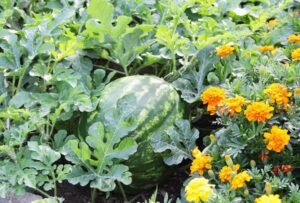

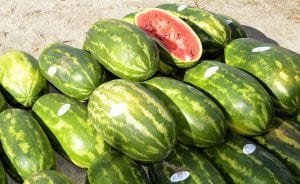


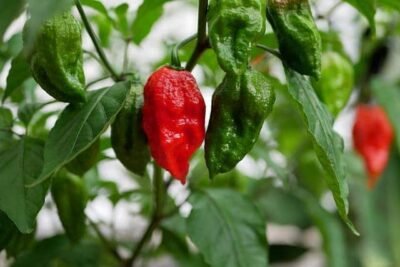
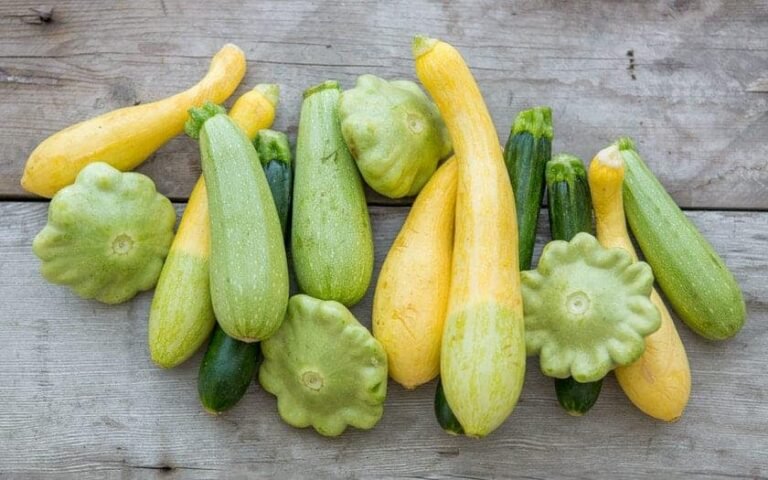


Thank you very much with this information its very useful indeed.Now I want to start okra farming in Zimbabwe where can I buy the seeds? Your teaching information was really detailed and it has encouraged me to start Okra farming now on my plot .
Than you indeed .
It will be best to check seed shops near you or visit your local agriculture ministry.